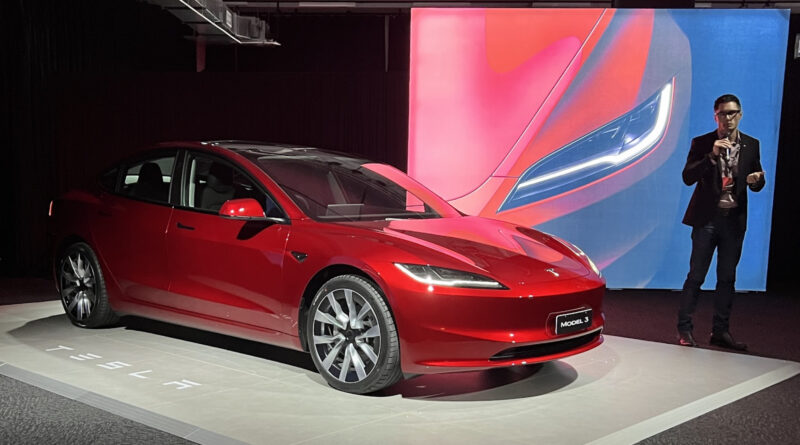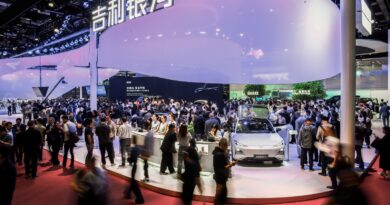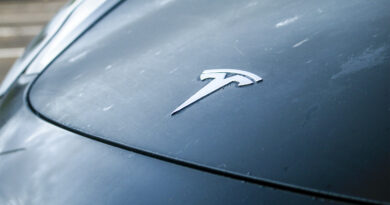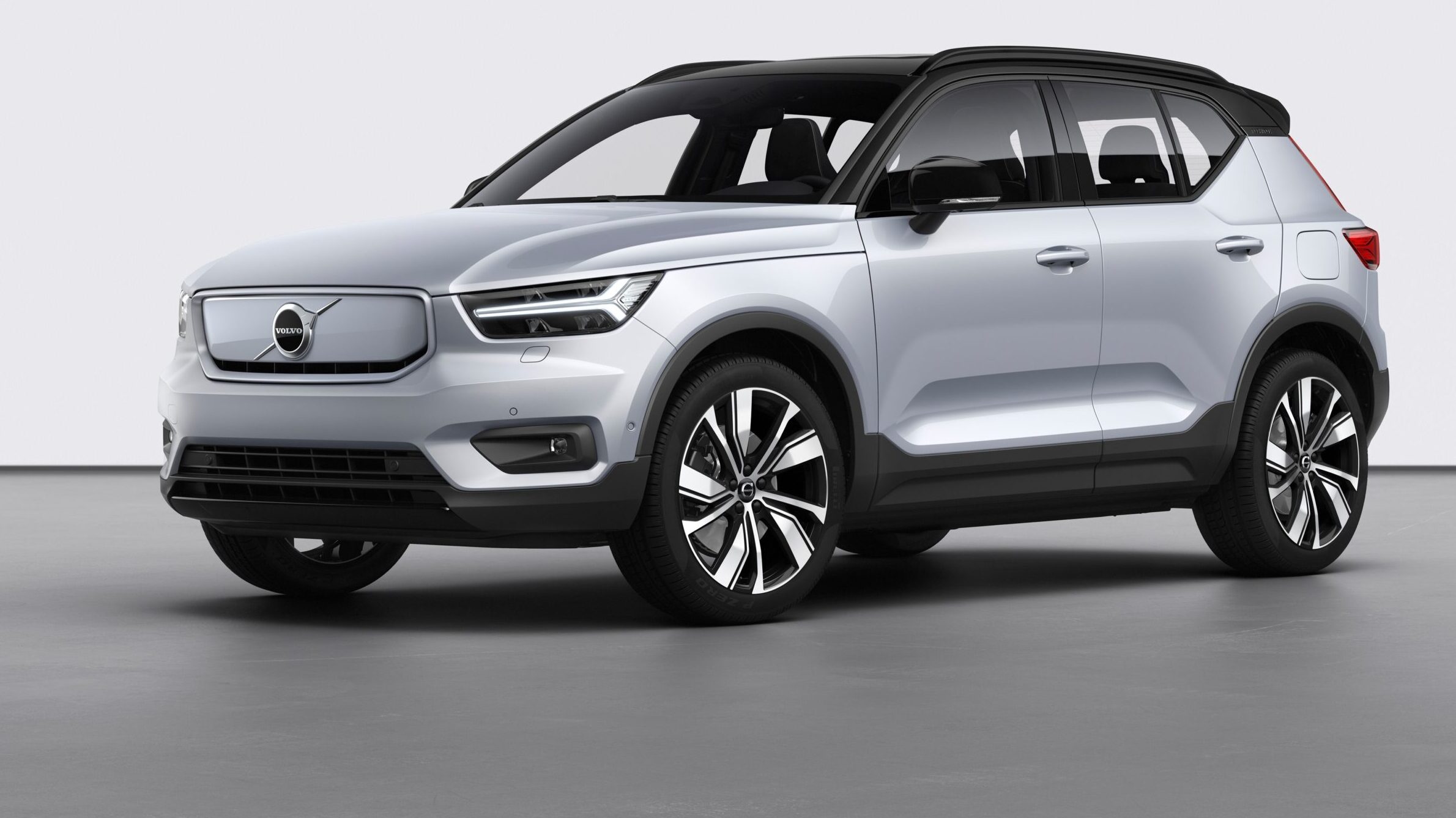New secret details of 2024 Tesla Model 3 Performance! Musk’s mega-fast electric car explored in Australia
Tesla has confirmed it will revive the Model 3 Performance in the first half of 2024 – but it will be a whole lot faster, more focused and high tech than the original that surfaced globally in 2017.
Despite rumours the high-tech hero of the 2024 Tesla Model 3 range could be called the Model 3 Ludicrous, Tesla has confirmed the new model will continue as the Model 3 Performance.
The imminent arrival of the new Performance variant is one of the headlines of the new 2024 Model 3, the first examples of which have arrived in Australia.
READ MORE: Has the 2024 Tesla Model 3 update done enough to fend off the EV onslaught?
READ MORE: Updated Tesla Model 3 now on sale in Australia
It was shown to media this week and some tantalising details given about just how fast it could be.
The company says the Model 3 Performance will be “pretty special” and arrive in the first half of 2024.
As well as additional performance – eclipsing the 3.3-second 0-100km/h capability of the original Model 3 Performance – it appears the heavily updated model will also get significant chassis and design changes to better differentiate it from garden variety models.
Expect much bigger brakes, better tyres and possibly some form of body kit.
Beyond that Performance model, though, there are also plenty more secret details of the new Model 3 that are leaking out.
Here’s what we learnt:
Tesla phone key is about to get smarter
Tesla was the first to make it so you could use a smartphone as a key, something that employed Bluetooth technology to talk to the car once the two were close. That Bluetooth tech is still in use, but Tesla has also now activated Ultra Wideband (UWB) for better accuracy. Tesla says UWB is 10 times more accurate in determining the location of the phone. So if you want to set the doors to only unlock the one you’re standing near then that should be possible. Tesla also says the UWB technology could allow more features in future via an over-the-air software update. The company is not saying what they are, but clearly it has things in mind.
Mostly new body
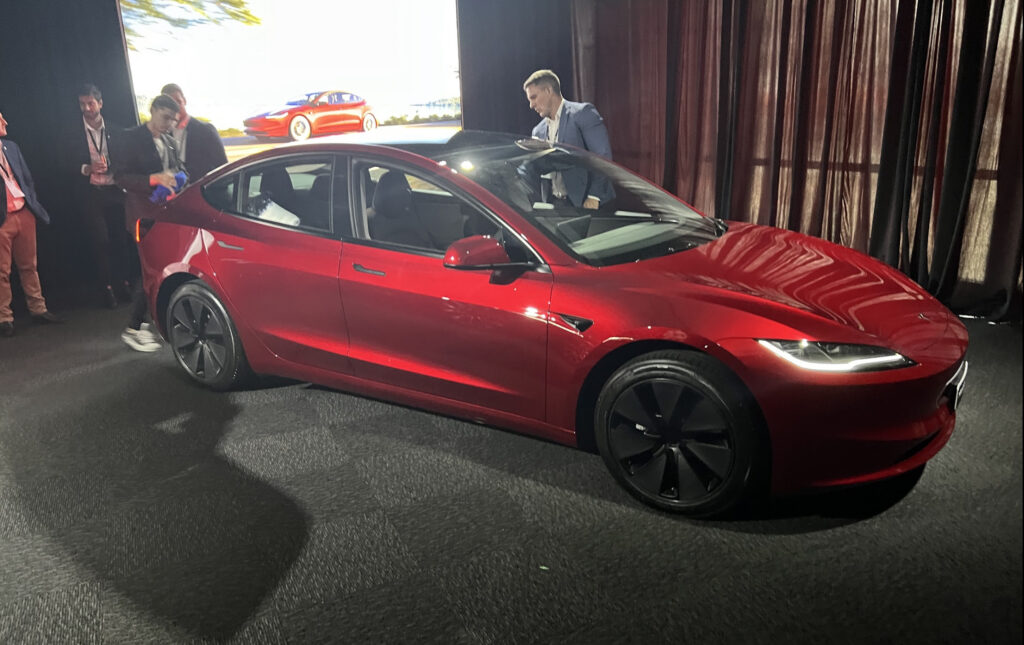
While there’s clearly a family resemblance, the new Model 3 is also significantly different. There are structural changes to stiffen the architecture as well as new bumpers and a new bonnet, each redesigned to lower aerodynamic drag. The coefficient of drag is now just 0.219, making it one of the most aerodynamically efficient cars on the road.
Tesla has also redesigned the doors, mainly to improve side impact protection. It’s all about readying for tougher NHTSA crash tests in the US; they’re designed to better prepare cars for impacts with larger vehicles, such as huge pick-up trucks. On the lower edge of each door there is now a tongue that slots into a groove beneath the door sills. That alone gives the doors a more satisfying thunk when you close them.

Plus Tesla says it’s stiffened the structure, especially around suspension components. It’s all about allowing the suspension to do its job better, in turn improving comfort levels.
Quieter than before
A major focus for the updated Model 3 was making the cabin quieter. That redesigned bonnet is said to reduce buffeting, incrementally reducing wind noise.
The rear windows are also now double glazed, with two thin pieces of glass glued together. They match the front side windows, further reducing cabin noise.

Tesla also says the additional fabric around the cabin – including on the dash and a suede-like material on the doors – helps absorb sounds, in much the same way as furniture in a house can reduce that hollow sound.
Upgraded suspension
Improving the ride comfort and compliance was a major goal with the new Model 3. Tesla has fitted new frequency selective dampers (FSD) that can adjust their damping force depending on how big and severe a bump is. Sharp bumps could have more compliance, for example, while gentle mid-corner undulations would allow a stiffer reaction to maintain body control. There are also new suspension bushes, again focused on improving the suppleness of the ride.
Tesla also says it has tweaked the steering ratio, but only to match the suspension changes and give the car the same quick-reacting feel of before.
New tyres
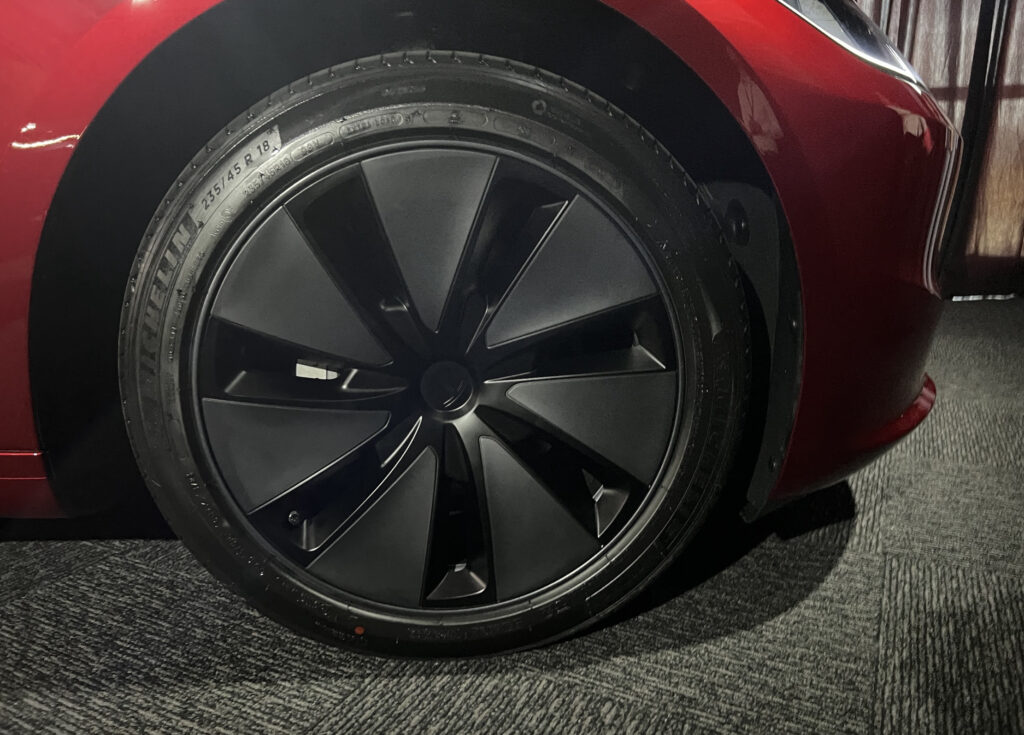
The 18-inch wheels fitted to the Rear-Wheel Drive and Long Range as standard are still Michelins and the optional 19s are still Hankooks. But both are new with less of an emphasis on high speeds and more of a focus on bump absorption and reducing noise. Tesla says it was an easy decision to make, albeit one that meant introducing an electronic speed limiter set to 201km/h. We suspect few drivers of the RWD or Long Range hit the previously achievable 225km/h and 233km/h top speeds, especially in Australia.
New cameras as part of self-driving 4.0
The new Model 3 gets eight new cameras outside, although the company is not saying exactly what has changed. We’re assuming they either have a wider field of vision or higher definition for better clarity – or both. Either way, Tesla says it’s all part of the full self-driving 4.0 hardware that is standard in the updated M3.
Those cameras also see the end of the front and rear parking sonar sensors. It means parking assistance – including estimating the distance to objects down to the centimetre – will be done with Tesla Vision, which also looks after things such as the radar cruise control and crash avoidance (there’s no forward-facing radar). Tesla says using the cameras for parking provides better functionality, including the ability to better alert the driver to a nearby kerb.
Child presence monitoring coming soon
Tesla says the 2024 Model 3 will soon get child presence detection as part of an over-the-air software update. It will utilise the in-cabin camera that has been added to the camera artillery (the Model Y has always had an in-cabin camera but this is the first time the Model 3 gets it). The camera has regular and infrared functionality, the latter allowing it to operate in the dark.
New touchscreen
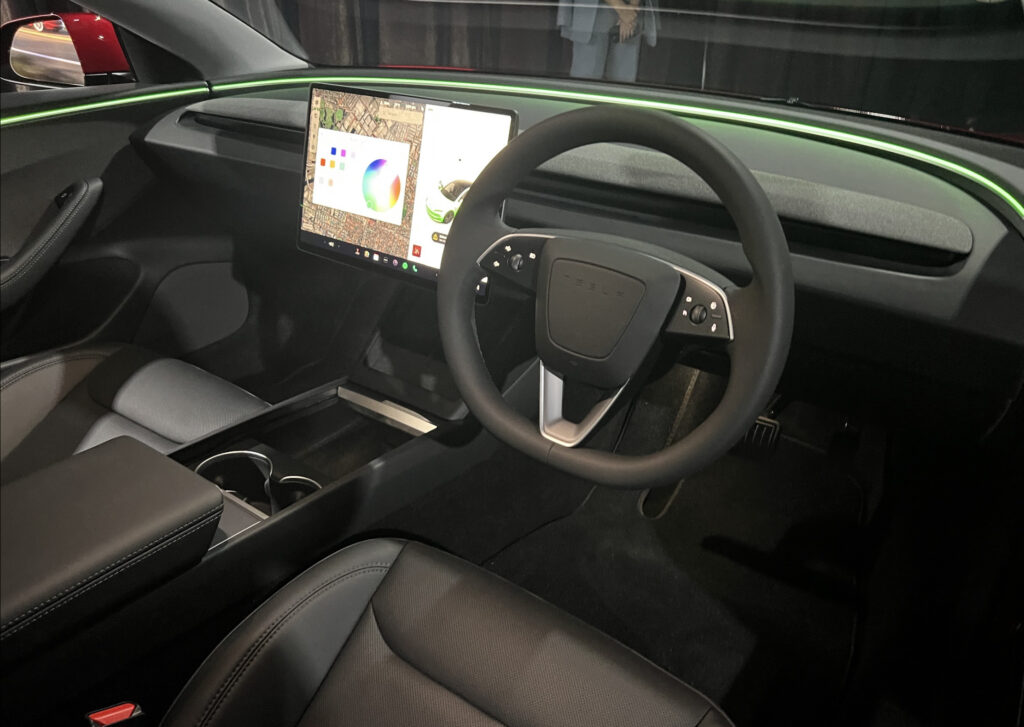
The 15-inch touchscreen may look the same, but it’s actually a new unit. It’s slightly thinner than before, has a brighter display and is said to be faster responding.
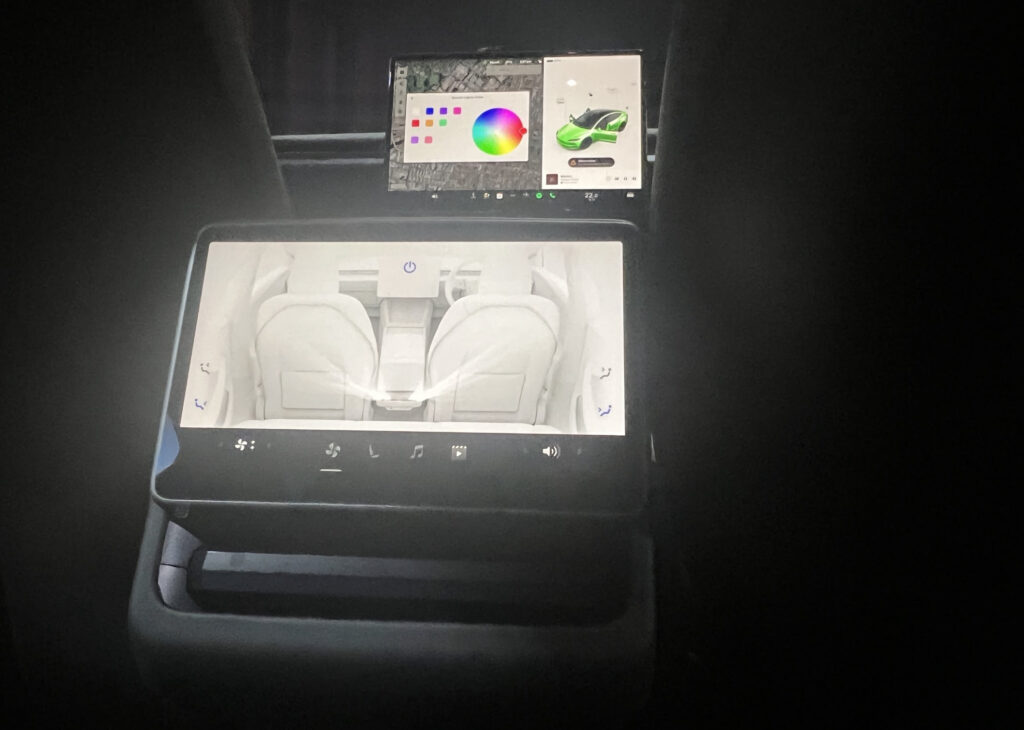
There’s also a new 8.0-inch touchscreen in the rear, which allows occupants to direct the air flow (as with the front vents, the ones in the rear are now semi-hidden). Tesla says having that electronic adjustability to the vents allows more functionality, including with remotely activating cabin cooling from the app. That rear screen can also be used to stream video content and hooked up to Bluetooth headsets; those in the rear can watch their own movies while those up front stream something different (when the car is stationary) or listen to music.
New sound systems with more speakers
Tesla has taken the Model 3’s audio system to the next level by adding more speakers to the Premium system fitted to the Long Range and upcoming Performance models. There are now 17 speakers, including two subwoofers hanging down from the rear parcel shelf. However, the speaker grilles that were previously at the top of each A-pillar (on either side of the windscreen) are no longer there. Instead, Tesla has hidden those speakers behind the fabric trim. There are also new amplifiers front and rear to power the speakers, which Tesla says helps create punchier and tighter bass.
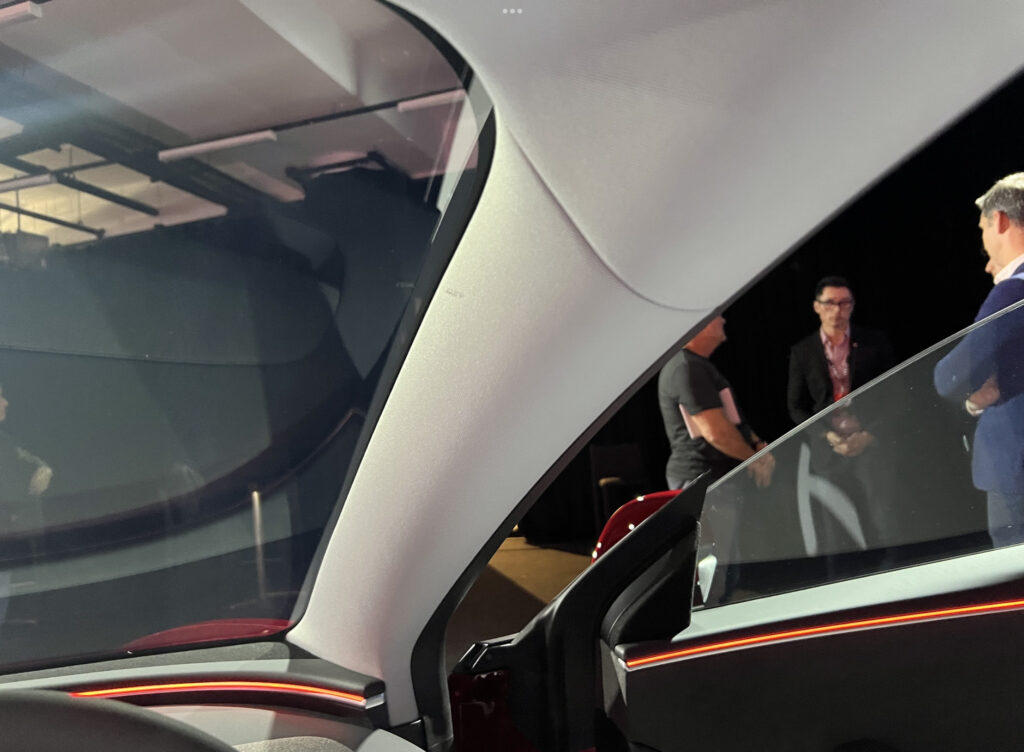
Even the nine-speaker sound system on the Model 3 RWD gets some new speakers and a new amplifier to subtly improve the audio quality.
Better phone call quality
The new Model 3’s quieter cabin should naturally make it a better place to make a phone call. But Tesla has also stepped it up with new microphones – one on either side of the cabin up front – for better audio quality to make calls clearer.
New noises outside
The 2024 Model 3 does without a traditional horn, instead now using the speaker that’s been fitted under the bonnet as part of the pedestrian warning system that emits a low-speed hum below about 30km/h. Tesla has also fitted a speaker at the rear as part of a rear pedestrian warning system. That rear speaker also provides the beeping chime that was previously used to signify the boot closing. The company says the speaker allows a nicer, fuller chiming sound.
Faster USB gadget charging
The 2024 Tesla Model 3 now only has three USB-C charging ports – one up front and two in the rear. That’s one less than before, but each now provides a whole lot more power. The previous USB-C ports could supply only 15W each – the same as what the two wireless phone chargers make – whereas the new ones can supply up to 65W. However, there’s only 130W between the three outlets, so if you’re charging three power hungry devices at the same time – such as laptops – then the maximum output for each will be capped at about 42W.
New lights

There are new headlights and tail lights, the latter now single piece units to reduce production costs. Tesla has also ditched the separate fog lights, again with the aim of reducing costs.
Fewer Tesla T logos
The now familiar Tesla T logo is less prevalent in the new Model 3 – and it’s all because design chief Franz von Holzhausen decided to remove the logo from the bootlid of his personal car and replace it with “Tesla” spelled out about five years ago. Turns out plenty on social media liked the idea so the decision was made to introduce the change this time around. The T logo has also been replaced with the word Tesla on the steering wheel.
No indicator stalks
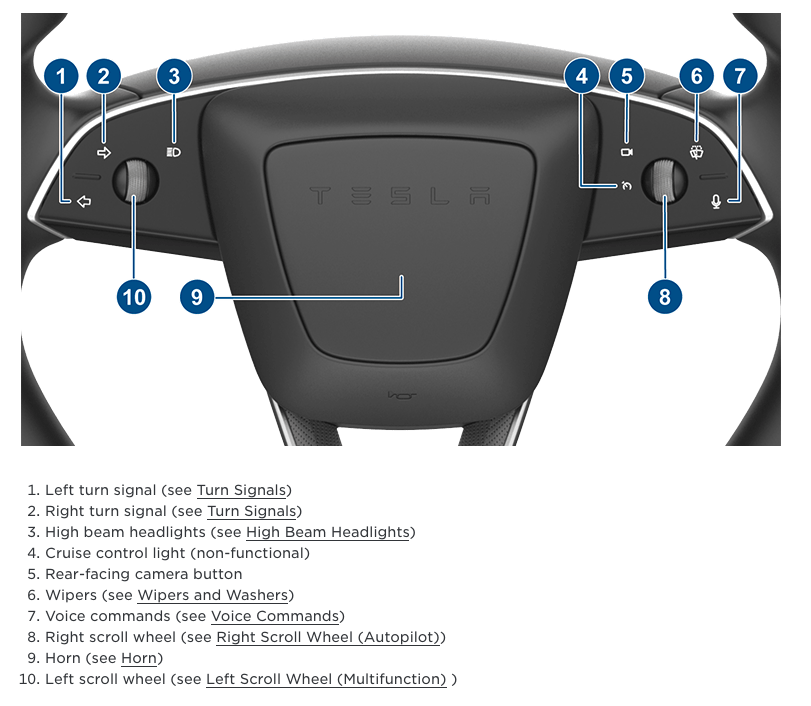
One of the most controversial changes with the Model 3 has been the removal of the stalks around the steering wheel. That means no indicator stalk, with buttons on the redesigned steering wheel for activating them (Ferrari and Lamborghini do a similar thing).
More customisation
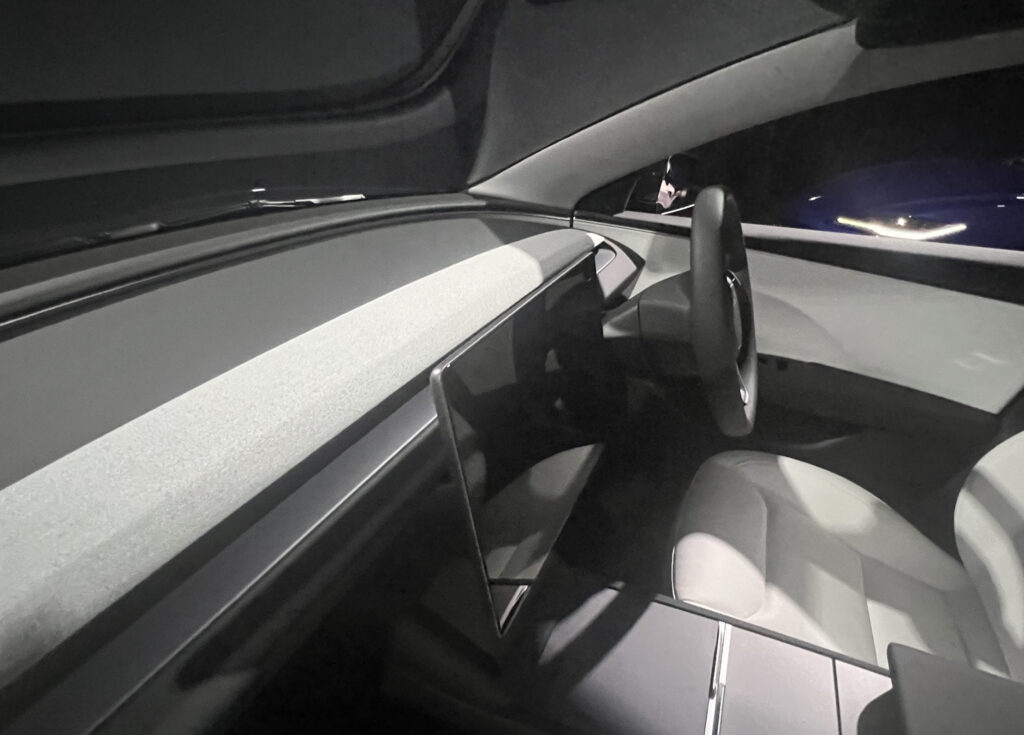
Many Tesla owners take to aftermarket suppliers to change all manner of trim parts on their cars; there’s no shortage of suppliers happy to box up some components and ship them to your door. But now Tesla is testing the waters with a removable trim strip across the dash. Owners will be able to clip it off and choose from a selection of alternatives to the current fabrics (one dark, one lighter, depending on whether you’ve chosen the black or white interior). Those accessory options are yet to be announced, but presumably carbon fibre will be one of the options. Aftermarket suppliers will also no doubt add to the options – and it also seems like an obvious place for fitting something like an aftermarket instrument cluster.
Manual rear door release
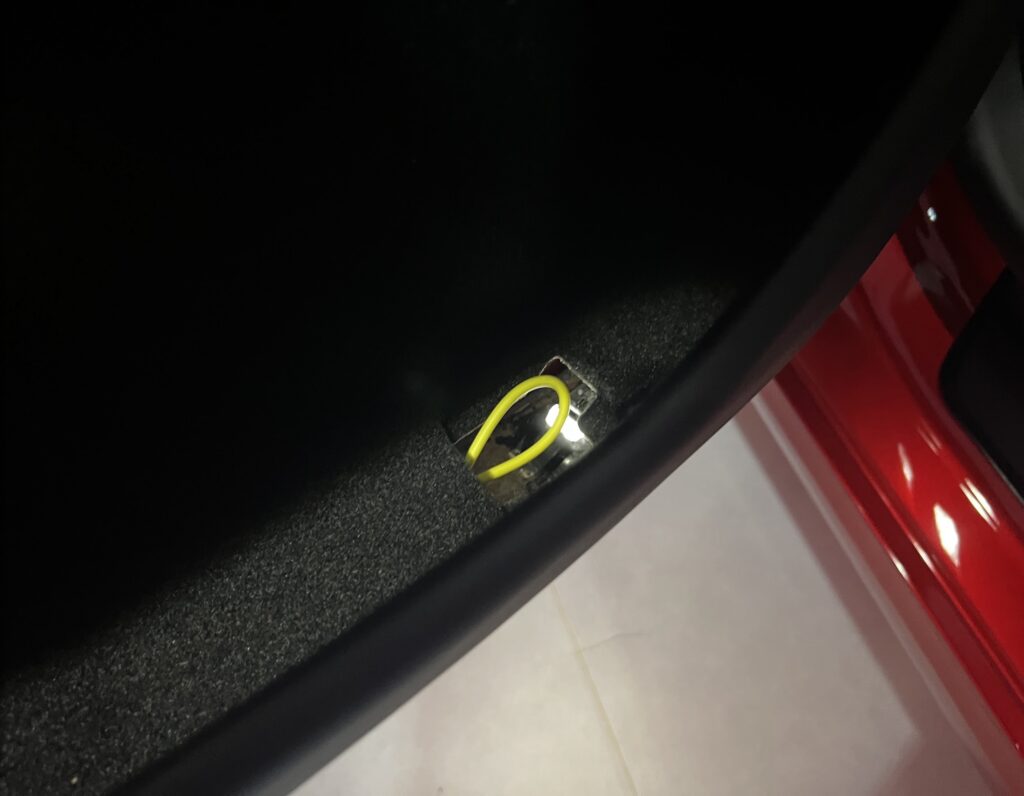
There are still buttons on the inside of each door to electronically release the door latch when you want to get out. But as well as the manual lever for the front doors, Tesla has now added a manual pull cord for the rear doors in the event of a failure of the button. The yellow cord is buried in the base of the rear door pockets under a removeable flap.

